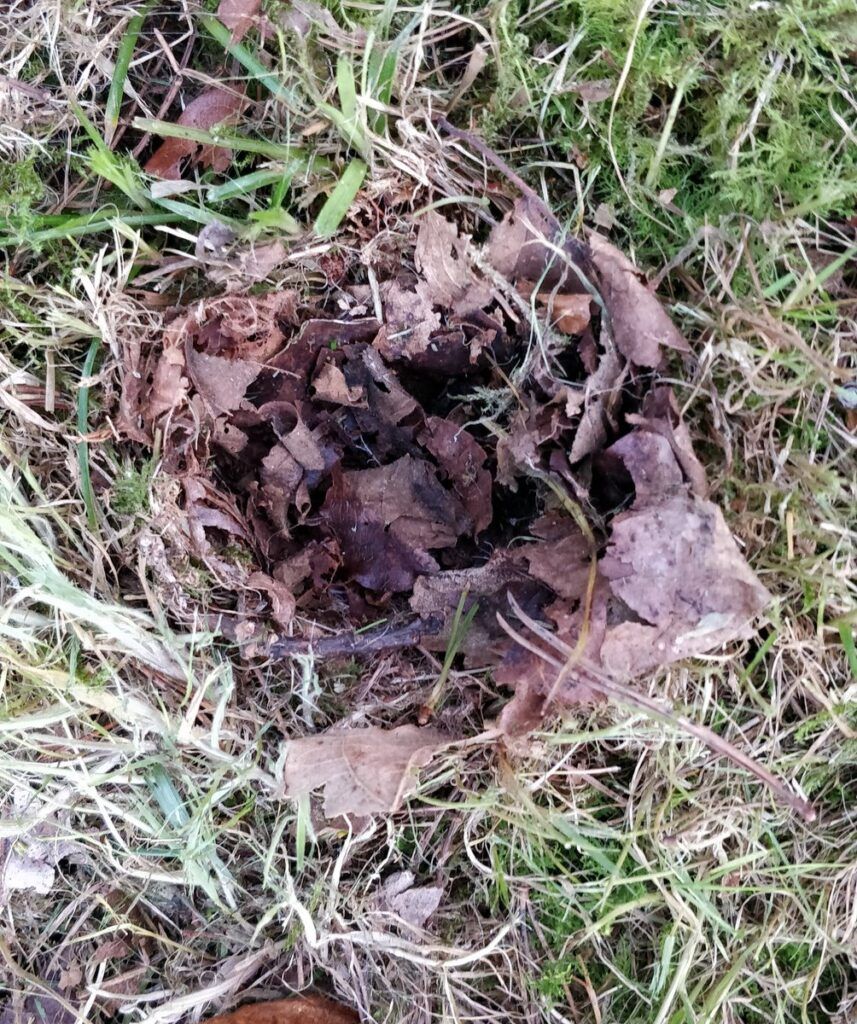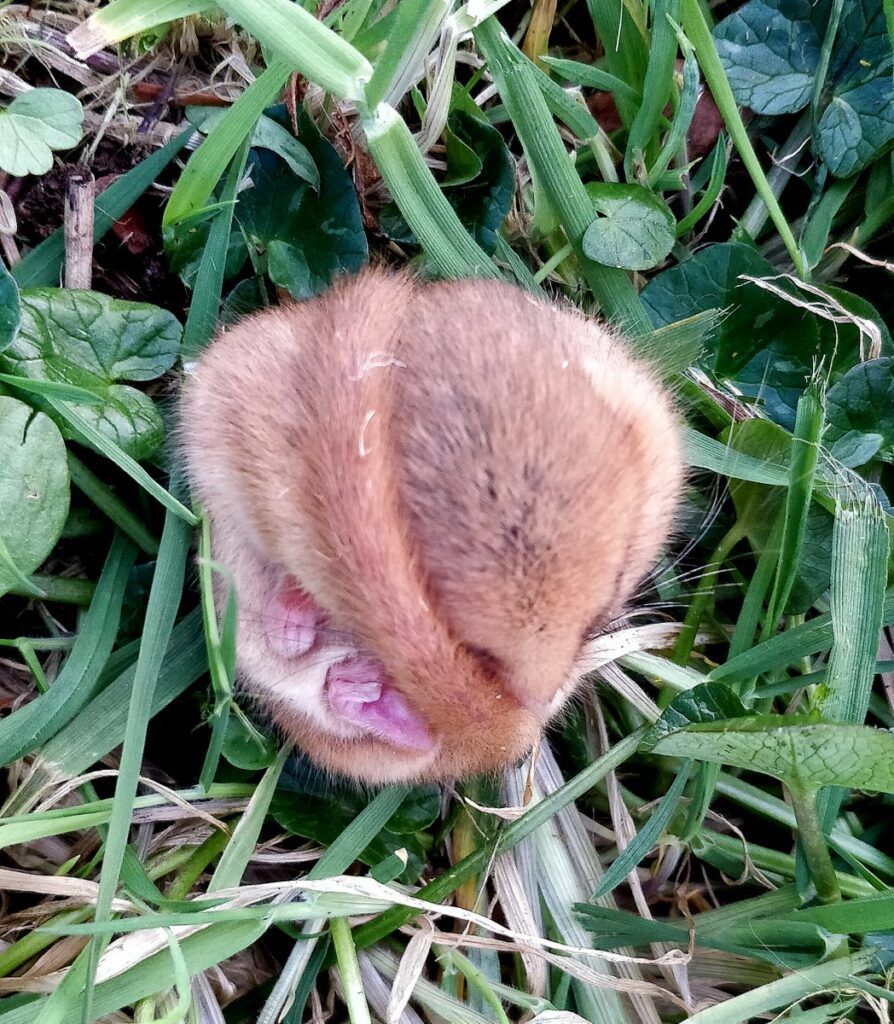Jen Bousfield has been monitoring dormice in five woodlands in Devon since 2010. Earlier this year she had a close encounter with a dormouse that she wasn’t expecting:
One evening at the beginning of April I received a telephone call. It was a friend from our Orchard Group who lives about half a mile away, closer to the edge of Bodmin Moor. ‘Jen, I have a dormouse, and I think I’ve killed it’, was how the conversation started. It was described as stone cold, rolled up in a ball and not moving. I found out that it had been placed safely inside a box in the garage with some moss and my offer to drive up and see was gratefully received, so off I went.



It transpired that our friend had decided to give the lawn a first cut and, mindful of the possible presence of hedgehogs, he had set the blades high. On completion he checked around and found a small hole near the edge of the grass about two metres from the back door. He could see fur between the brown leaves and realised there was an animal in a nest. Picking it out, he realised it was a dormouse as soon as he saw the thick tail. It had no apparent injuries but it didn’t stir and so he thought that it might have died of fright from the sound of the mower.
Lots of questions followed including why had it hibernated so close to the house and why hadn’t the dog found it? In answer they do seem to choose more open areas to hibernate in, and hibernation nests are sometimes found in ground away from the base of a hedge for example – this may because they are less likely to dry out during hibernation if their nests are in more exposed locations. As for the dog, in spite of their exceptional sense of smell, dogs appear to be unable to locate hibernating dormice. This could be the result of 40 million years of evolution that has eliminated dormice giving off a scent while they are hibernating.
We realised that because of the dog, we couldn’t just replace the dormouse in its nest even if we covered it with the flowerpot we had brought with us. We looked for a better location to move the dormouse to and agreed that it would be best to place it at the base of the nearest hedge bank amongst some granite boulders. This was about 10m away from where it had been found, so well within its home range and the hedgerow connected to nearby land where dormouse feeding signs had been found. I took a photo of the dormouse and weighed it. It was 19g which I thought was a good weight for a dormouse at this time of year. I was unable to sex it because it was beginning to stir. I placed the dormouse with more moss into a hollow between two boulders and wedged the flowerpot on top checking that there were escape holes underneath but nothing that the dog could access.
After we finished relocating the dormouse, I realised that I should have taken out the leaves from its nest and used them to line the new location with additional moss, but we didn’t want to disturb it again. The following day, we checked under the flowerpot and the dormouse had gone, hopefully none the worse for wear after its close shave with a lawnmower.
Jen Bousfield, Dormouse monitor, April 2025
What to do if you find a dormouse in an unexpected location?
If it’s dead, it’s straight forward. Please send the carcass to the Zoological Society of London (ZSL). Their staff will carry out a postmortem (the submission form is available of the PTES website in the section on the NDMP).
If you find a live dormouse which appears uninjured, then put it back as close as possible to where it was found. This may be at the base of a hedge or scrubby area (connected into the wider landscape). The dormouse should be placed with any nesting material that has been found with it and, if possible, somewhere secure. This will provide the dormouse with some protection from predators while it is on the ground but still allow it to come and go.
If the dormouse appears to be injured, it will need to be taken to your nearest wildlife rescue centre. Please ask them to contact PTES if the dormouse recovers so that it can be brought into the Common Dormouse Captive Breeders Group.
July 28th, 2025
